Humans yearn for an easier life. And this constant aspiration of making lifestyle easier pushes humanity to invent new technologies and upgrade them continuously. How convenient it would be if someday, no one actually won’t need to hold a mobile phone constantly in their hands; instead, they can control all the functionalities just with their hand gestures or head nod and voice commands. The industrial digitization is on demand and people are adopting these changes.
On the other hand, the advancement of technologies brought a lot of drawbacks too. It made people hooked up to devices, shrank their attention window span, and snatched their thinking capabilities. For instance, all those addictive digital games brought severe health hazards like obesity. But won’t it be beneficial if such games could be invented that are digitally advanced and at the same time make people move constantly? Well, all these are already possible and implemented and gradually upgrading those implementations.
The answer to making human life easier and better is Augmented Reality (AR) Technology. AR has brought industrial revolution & Augmented Reality in industry has shown enormous potential and advancements.
Introduction:
The word ‘Augmented’ has been derived from the Latin word ‘augere,’ which means to add or increase. Augmented Reality technology is nothing but superimposing a virtual image to the real world through your mobile device. The preliminary process of AR involves scanning an object through the device lens, and then the algorithm and the software do their job from the backend, and finally, they produce a digital image and impose it virtually on the real world.
Because of providing this real-time experience to the user, Augmented Reality technology has made its place in diversified industries in the past few years and is growing the market like mushrooms. Everyone is familiar now with the game Pokemon Go or those mushy filters on Snapchat. But apart from the entertainment or gaming industry, it already showed its potential among diversified verticals- Healthcare, Automobile, Education and retail, to name a few.
This article will throw some light on the usability of AR in some diversified fields.
Applications:
The potential of Augmented Reality in industry is enormous. It’s a matter of time when this will become a day-to-day part of our lives. Even though we’re not there yet, AR did leave some remarkable footprints in some industries and is upgrading continuously.
Here’re the some best examples of Augmented Reality industrial applications.
1.Healthcare
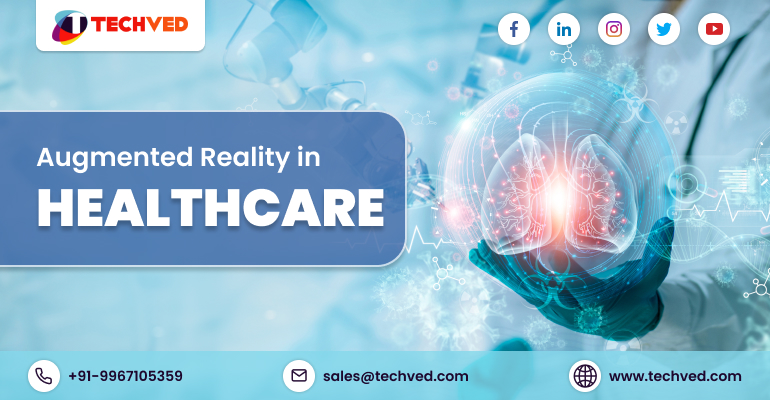
AR technology finds its broad application in the medical and healthcare domain. For example, Johns Hopkins, University of Chicago, and University of Texas hospitals use the Immersive Touch platform that creates 3-D replicas from patient’s scans. It helps the surgeons to study and collaborate with their team and discuss surgical tactics.
Benefits of Augmented Reality in Healthcare
With the ability to generate accurate and lifelike 3D images that practitioners can access and examine using augmented reality technology such as the Microsoft Hololens. This can speed up diagnosis and improve patient care. Patients can now receive more in-depth and educated insights through the usage of augmented reality in consultations by employing AR to support patient consultations.
Another example of augmented reality in hospitality industry could be the use of Proprio platform. It combines Machine Learning with AR and creates an ultra-precise 3D image that helps surgeons see through obstacles and collaborate with the team on surgery plans. Hospitals like Seattle Children’s and the University of Washington Medicine are already using this platform.
2. Automobile
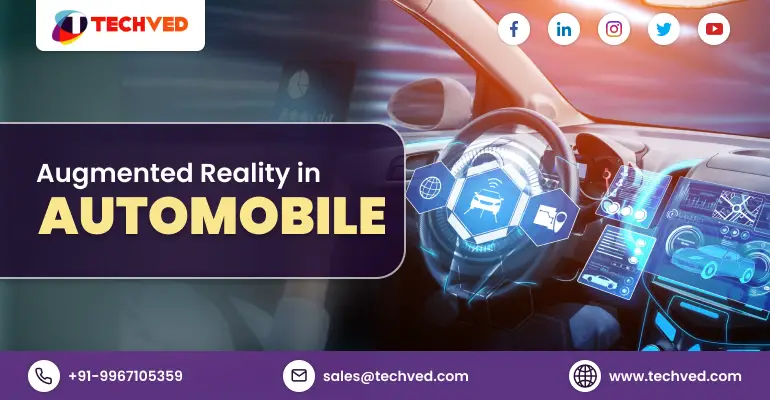
The entire automotive industry has experienced changes with AR technology. Augmented reality creates new opportunities at every stage of the process chain. It aids in manufacturing and inventory, aids technicians with car maintenance, and improves systems for a more enjoyable driving experience. Consider the advantages that AR-based solutions provide to the automotive industry and the companies that operate in it.
Benefits of Augmented Reality in Automotive Industry
Augmented reality is here to improve navigation and infotainment systems, as well as vehicle safety. For example, improve navigation, adaptive cruise control, and lane departure warning. AR-assisted dashboards, real-time street signs and accident warning, and AR entertainment systems are some further examples. As a result, drivers receive real-time information about their surroundings and road conditions.
The automobile industry is one of the sectors that is fast tightening their implementation of AR. Like the collaboration of Volvo and Microsoft HoloLens back in 2015. Microsoft HoloLens is like an advanced pair of goggles that someone needs to put on their head, and for VOLVO, it will create a 3D image of the car they want to buy. Not only can the person check the features, colors and options, but they can also check the engineering details. So, instead of seeing all the information on a computer screen, the consumers can be a part of the experience. They can even see the real-time driving scenario on a virtual road like what their car will do to aid in the situation, like a rushing car coming in front. This collaboration made the consumers feel more emotionally secure while buying a car. Subsequently, the AR algorithm of Hololens is helping the automobile engineer in designing the car as well.
3. Education
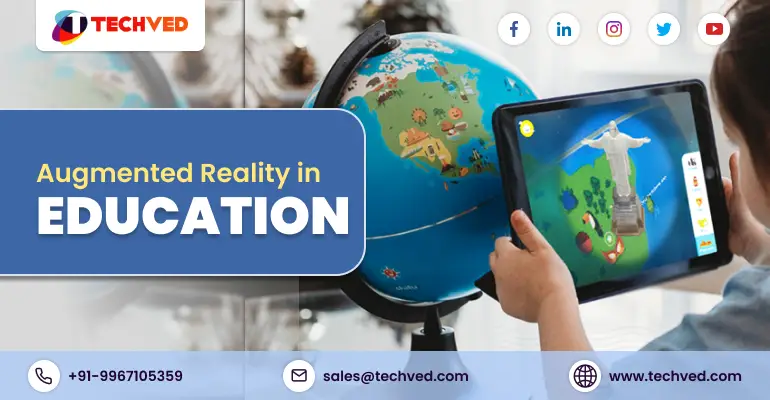
With the new generation coming aboard, teaching could be extremely challenging. The Zen-Z is growing up with tabs in their hands and automatically programmed into technology. So, to grab their attention and make them learn could be a real challenge if only to stick to the traditional way. Here again, Augmented Reality technology comes to the rescue.
Benefits of Augmented Reality in Education
Augmented reality-based instruction has the potential to replace outdated methodologies and textbook-based reading. However, because everything cannot be transferred to technically right now, one should begin by employing a blended strategy for both AR-based learning and textbook-based learning. AR-based classroom courses (Smart Class) or even virtual application-based classrooms on smartphones make pupils more participatory. As previously stated, as students are able to learn more and clearly, they are also able to think outside the confines of the classroom.
For example, the "Element 4D" AR app is another promising example of AR in education, which makes learning chemistry fun and easy. The application enables the learners to find the atomic weight, chemical elements, the reaction between two chemicals, and their names by simply putting two paper cubes for a special element block. Another AR app called “Dinosaur AD” is helping kids to learn in a fun way. It created 3D images of dinosaurs with a set of flashcards, and the students can see the actions of dinosaurs and information about them.
4. Retail
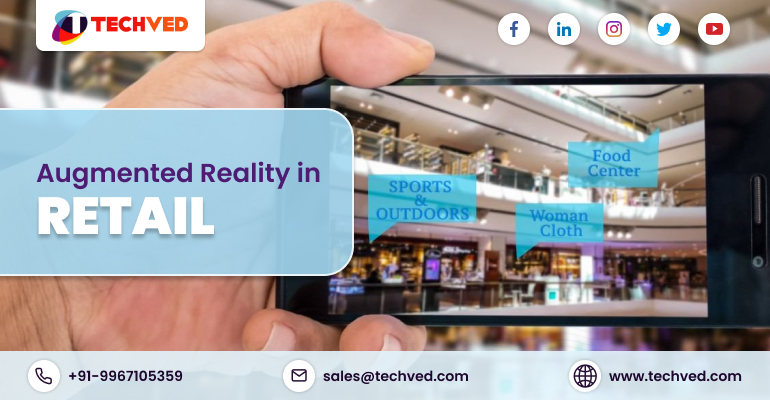
With the help of immersive and interactive AR applications, many retailers are able to reach a large number of consumers and build a long-term relationship with them which in turn is increasing their brand value.
Benefits of Augmented Reality in Retail
AR technology engages all of the senses and encourages customers to interact with various products. In retail it allow customers to envision and feel a product before purchasing it. When a customer can imagine a product, they have a much better understanding of whether or not that product is a good fit for them. It literally delivers on the 'try before you buy' approach, providing customers with the tool to acquire a true sense of the product. By combining virtual and traditional retail, firms may employ augmented reality to offer clients to a bigger inventory of products rather than taking up valuable shop floor and warehouse space.
For example, IKEA, the furniture company, is one of those first implementers of the AR app, which produces real-time 3D images of the furniture on the spot. Thus, the buyer can understand their need for that particular item before investing in it. Similarly, a make-up brand like Nykaa or eyewear brands like lenskart also implemented AR to help users try on the make-up products or glasses before the purchase.
5. Manufacturing
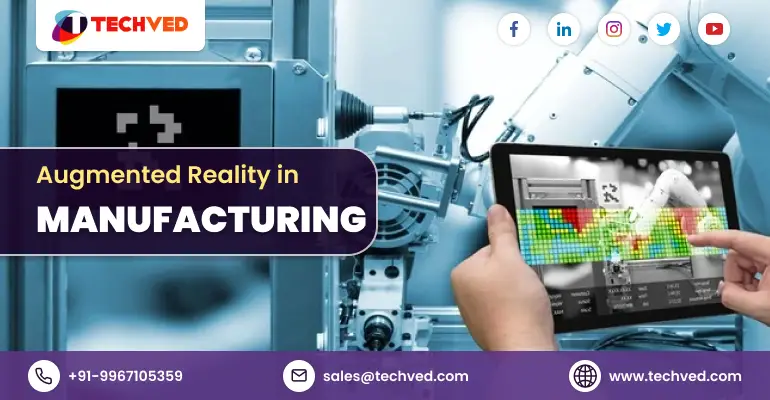
Augmented Reality technology is widely employed in a variety of industries. We can create appealing augmented reality experiences that assist increase efficiencies, build better products, and enable a safer, more productive environment for workers and customers by harnessing the richness of 3D and IoT. AR Development Company will be widely employed in numerous fields of the industrial business.
Benefits of Augmented Reality in Manufacturing
Engineers can complete their tasks more quickly by navigating virtual information displayed on real-world environments. In terms of assembly, engineers can avoid relying on schematics by using AR applications. Augmented reality is being used by manufacturing organisations to control and repair machines and equipment used in the manufacturing process. Instead than relying on a manual to identify problems and then take appropriate action, AR can significantly aid in maintenance by saving research time. Issues can be properly visualised and resolved.
For example, In the aerospace production process, for example, assembly help uses projectors to show the next part placement. What differentiates augmented reality today is primarily its size, adaptability, and capabilities.
6. E commerce Shopping Experience
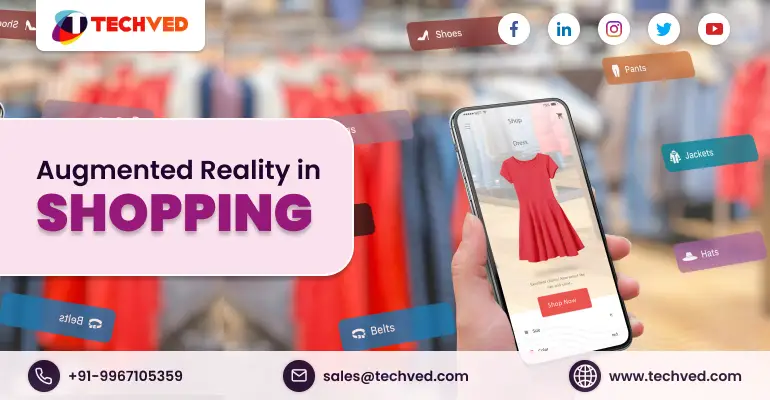
AR is becoming more popular in e-commerce, and for good reason. While e-commerce allows customers to purchase from the convenience of their homes, augmented reality (AR) enables them to interact with your business and actually experience the products. What does that imply for online shopping? higher sales! But AR in e-commerce offers other advantages as well.
Benefits of Augmented Reality in Shopping
The interactive nature of augmented reality in e-commerce enhances the purchasing experience. Customers feel more a part of your brand and the product when you give them power over digital aspects in their physical environment. They can click through things that most appeal to them and change the features, colours, and sizes. They practically have a floor salesperson at their disposal.
For example, Have you ever gone around a large hardware shop looking for a sales representative to assist you? What if that store's website had an AR function that painted a yellow-brick road for you to follow through the store to the product you require? That is only one example of what AR can do.
7. Logistics
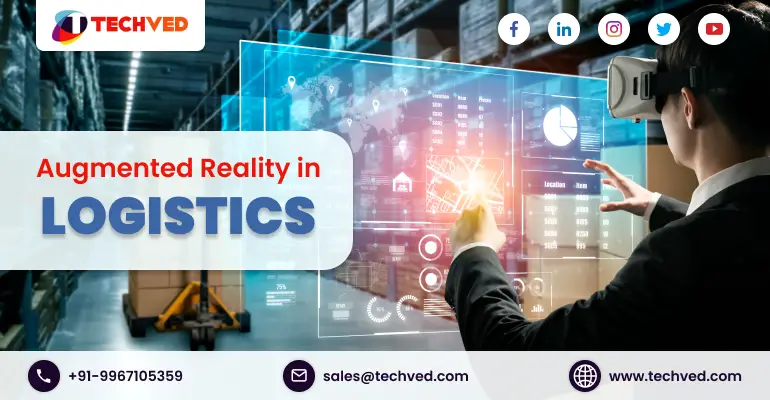
Logistics is a customer-focused industry that strives to provide rapid, dependable, secure, and accurate services. Faster and more accurate information access is vital for precise planning and overall operation for improved customer experience.
Benefits of AR in Logistics
Augmented Reality in Logistics is about to transform the infrastructure by streamlining the complete process. Everything becomes simple to optimise, from highly inventive warehousing management systems to secure shipping to effective supply chain management. Logistics is now moving away from manual operations and toward augmented reality-based operations.
For example, prior to shipping, the AR system is utilised to confirm that the shipment complies with applicable international import and export standards. Furthermore, AR devices aid in trade documentation verification by scanning trade documents or cargo for essential words and recommending adjustments or corrections for commodity code classification. Furthermore, after a shipment, the technology can go even farther to avoid port and storage delays by real-time interpreting the scanned papers.
8. Architecture and Design
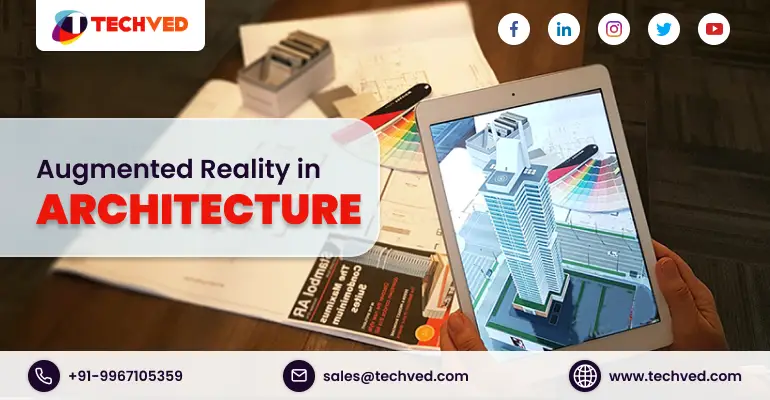
In the area of architecture, augmented reality (AR) is a growing subject of study and application. By superimposing architectural plans onto real-world scenes, we can better visualise them. However, few of us understand what augmented reality is and how it may be used in architecture firms.
Benefits of AR in Architecture
Architects who are developing buildings or structures may find AR useful. Augmented reality programmes project visuals from your phone screen or other digital devices onto the physical environment around you. As a result, architects may utilise this technology to plan projects and see how they seem in real-world surroundings.
For example, it may be used to analyse construction site safety threats by merging data from drones and sensors with 3D models of buildings. This would enable architects to immediately identify and address any safety hazards on construction sites before they became harmful or unmanageable.
9. Aerospace & Defense
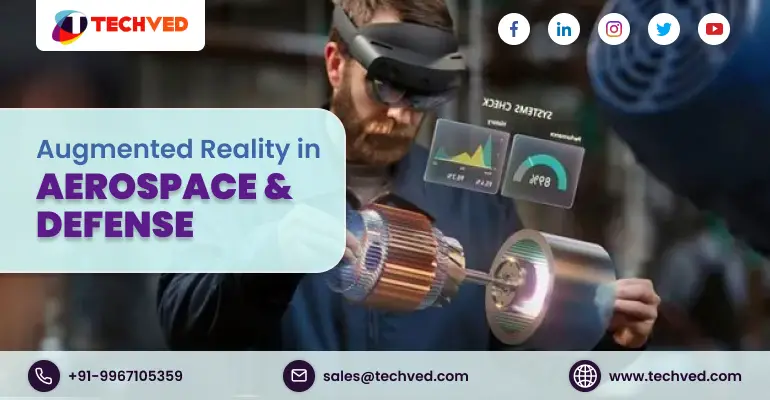
Several militaries and defence contractors are investing in augmented reality technologies. Militaries are boosting their spending in this sector in order to acquire and use advanced technology. The aerospace and defence industries are ideally positioned to utilize this technology, and in some cases are currently doing so for maintenance.
Benefits of AR technology in Aerospace & Defense
AR has important training applications and can be used to construct low-risk effective training missions, particularly for pilots. As militaries seek to provide training in a range of settings without placing personnel in danger, the potential for providing safe training environments for pilots will be lucrative. The advancements in artificial intelligence (AI), robots, and augmented reality (AR) technologies will provide new alternatives for military surveillance techniques.
For example, given the complexity of the aircraft manufacturing, assembly, and maintenance and repair processes, new market technologies must be incorporated sooner or later to meet the requirements and acquire a competitive edge.
10. Travel
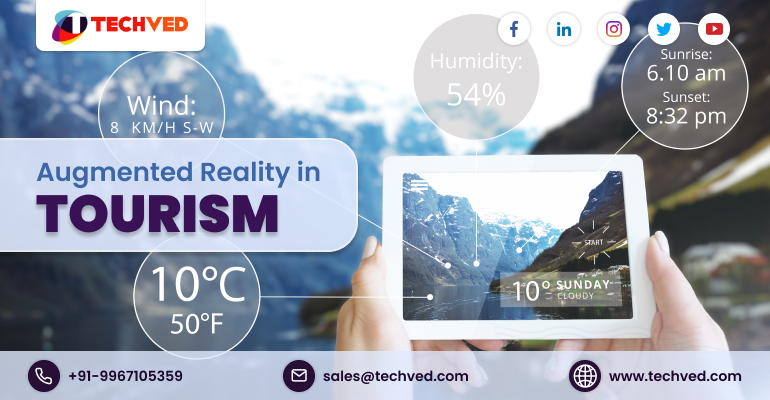
The travel and tourism business, like every other area that is embracing the benefits of AR, has seen enormous development with this emerging technology. AR technology is playing a critical role in altering the tourism scene and improving tourist experiences.
Benefits of Augmented Reality in Tourism
Augmented Reality services provide hotels and lodging with limitless opportunities to communicate with customers and tourists. It enables organisations to deliver immersive information to potential clients through 360-degree visual tours and the exhibition of 3D images.
For example, For example, a user may aim their phone at a restaurant and quickly receive menus and reviews. Tourists can acquire information about key sites of interest on the go with augmented destinations, taking their experiences to the next level.
Conclusion
With the growing need for automation and personalization and a huge prospect of a $198billion market size by 2025, AR is the future of technology & boosting AR applications in industry. It has already paved its way in a diversified sector, and with time, just strengthening the roots deeper in those fields along with the up-gradation. More or less, every industry is taking its baby steps in implementing AR. Augmented Reality market and Ads are way more impactful than any other medium. According to a survey, 61% of shoppers prefer retailers that offer AR over those that don't. 68% of shoppers spent more time with products if AR was available, and 72% of shoppers purchased items they had not planned to buy because of AR. So, in the near future, while AR technology will grab most of the daily life things under its umbrella, it might create a void in the human job sector as well. In that case, a win-win solution needs to be drawn to keep technology and humankind in the same boat.
FAQs
Is it difficult to implement AR Technology?
Everything is possible in augmented reality. However, we are now confronted with technological limits as well as new opportunities. Nothing about AR is difficult. The implementation complexity is determined by your imagination, and getting started is not as difficult as you would believe. AR is actively being developed, and there are numerous tools and frameworks available to help developers.
What are the limitations of Augmented Reality?
Few limitations of AR are:
1. Augmented reality is costly to develop, and some AR apps are overly sophisticated for the ordinary user.
2. Privacy and security concerns may arise as a result of Augmented Reality. This is due to the difficulty in distinguishing between what is real and what is not, leading to a fear of being "tricked" by an attack.
3. One of the drawbacks of AR is how addicting it may be to constantly check their phone for updates on the game or other apps.
How does AR helps in workplace?
AR allows firms to place trainees in immersive sessions without leaving the office as a hands-on means of learning skills and jobs. AR may develop sequences to test and train folks rather of putting them in harmful circumstances. It is time for businesses to adjust to a new normal. Processes, work platforms, and employee enablement must all incorporate resilience and adaptability. They must be adaptable in order to respond to a quickly changing environment and evolving client demands.
Does Augmented Reality increase sales?
Yes. As augmented reality (AR) develops traction in the corporate sphere, it alters how companies connect with their customers. AR has transformed the customer experience and is a significant difference in today's market with increase revenue, sales & business. AR has given marketers new ways to communicate with their customers in three dimensions on mobile devices.